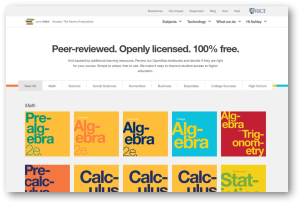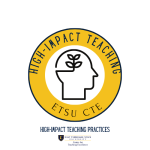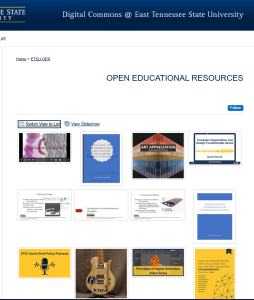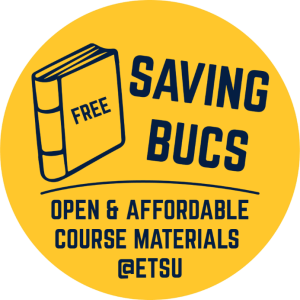8 Open Educational Resources (OER) and Open Pedagogy
Open Educational Resources (OER)
What Are OERs?
Open Educational Resources (OERs) are freely available teaching and learning materials that carry open licenses, granting users the ability to:
- Retain: Make and own copies of the materials.
- Reuse: Use the materials in diverse settings, from classrooms to study groups.
- Revise: Adapt or modify the content to fit specific needs.
- Remix: Combine the material with other resources to create something new.
- Redistribute: Share the original or modified materials with others.
OERs encompass a wide variety of resources, including textbooks, assessments, assignments, videos, case studies, and tutorials.
Benefits of OERs
-
Affordability: Reduces or eliminates costs for students, supporting broader access
-
Adaptability: Content can be customized for specific disciplines, regions, or learner needs
-
Responsiveness: Instructors can incorporate timely updates or local examples
-
Accessibility: Available in high-tech and low-tech formats to meet different access needs
-
Collaborative Potential: Encourages shared authorship, revision, and innovation in teaching

What is Open Pedagogy?
Open pedagogy is a teaching approach that emphasizes transparency, collaboration, and student engagement in the creation and sharing of knowledge. While connected to OER use, it focuses less on what is used and more on how learning is structured—with an emphasis on learner participation, co-creation, and authenticity.
Defining “Open” in Open Pedagogy
Open pedagogy invites reflection on core questions: What is being opened? How is it being opened? Who is included in the process? Unlike OER—which has clearly defined legal guidelines—open pedagogy is fluid and contextual. It exists along a spectrum of practices, shaped by instructional goals, student needs, and ethical considerations.
Key Aspects of Open Pedagogy
Open pedagogy can involve any combination of the following:
- Open Content and Student-Generated Materials
-
Use of openly licensed materials to reduce barriers to access
-
Students contributing to shared resources—e.g., co-authoring textbooks, curating content, or building learning repositories
-
Attention to inclusiveness by incorporating a range of voices, contexts, and examples
-
- Open Teaching and Transparency
-
Instructors sharing course designs, goals, and assignments openly
-
Collaborative development of course materials (e.g., a syllabus co-created with student input)
-
Publicly available teaching reflections or professional learning portfolios
-
- Public and Sustainable Student Work
-
Assignments designed for real-world audiences: blogs, infographics, podcasts, Wikipedia contributions
-
Encouraging students to create resources with lasting value beyond the course
-
Providing choices for students about whether and how their work is shared publicly
-
- Student Networking and Community Engagement
-
Opportunities for students to engage beyond the classroom—e.g., guest speakers, online forums, collaborative digital projects
-
Support for building personal learning networks, portfolios, or professional identities
-
Connection to local or global issues through meaningful project-based learning
-
Key Values of Open Pedagogy
Open pedagogy is built on two core commitments:
-
Openness as a pathway to access: Making content and course structures more transparent, customizable, and shareable
-
Participation as a design principle: Involving students as active contributors to the learning process
While different instructors emphasize different aspects, both values aim to support more meaningful, inclusive, and engaging educational experiences.
Challenges and Ethical Considerations
-
Balancing agency and support: Open-ended assignments can empower students, but may also require careful scaffolding and clear guidance
-
Privacy and digital safety: Instructors must navigate ethical considerations when asking students to share work publicly
-
Institutional structures: Grading policies, academic calendars, and platform constraints can shape how open pedagogy is implemented
-
Availability of quality resources: In some fields, well-developed OER may be limited or require adaptation
Evolving and Iterative Nature of Open Pedagogy
Open pedagogy is not a one-size-fits-all model. It evolves with each class, community, and context. Instructors are encouraged to experiment, reflect, and adapt as they learn more about what openness looks like in their teaching. The goal is not to adopt every open practice, but to ask: How can this learning experience be more collaborative, transparent, and accessible for the students I teach?
High-Impact Tips from Gen Ed Scholars
 By making my course open access and emphasizing open pedagogy, I empowered students to engage with material at their own pace and arrive to class prepared for deeper, active learning. Beginning each unit with a concept mapping exercise not only helped students organize prior knowledge and identify gaps, but also highlighted the diverse expertise each student brings to the classroom, fostering a collaborative and inclusive learning environment.
By making my course open access and emphasizing open pedagogy, I empowered students to engage with material at their own pace and arrive to class prepared for deeper, active learning. Beginning each unit with a concept mapping exercise not only helped students organize prior knowledge and identify gaps, but also highlighted the diverse expertise each student brings to the classroom, fostering a collaborative and inclusive learning environment.
Larry Baranowski | Biology Non-Majors I (BIOL 1010, BIOL 1011)
ETSU Open and Affordable Course Materials Awards Program
ETSU Open and Affordable Course Materials Awards Program
Textbook costs are a major barrier to student success. The ETSU Open and Affordable Course Materials Awards Program supports instructors in adopting, adapting, or creating free or low-cost learning materials for their courses.
Who Can Apply?
Awards are available for individual instructors and cohorts (multiple instructors teaching the same course).
Funding Levels
- Tier I ($500–$2,000): For instructors adopting, adapting, or creating open/affordable materials in a course currently using costly textbooks or a new course.
- Tier II ($500–$2,000): For instructors updating or modifying previously adopted open/affordable materials.
What Qualifies as Open or Affordable?
- Open materials are free and openly licensed for reuse, revision, and sharing (e.g., Creative Commons).
- Affordable materials are free for ETSU students but not openly licensed (e.g., library resources).
Important Notes
- Funds cannot be used for commercial e-textbooks or rentals.
- The award is funded by the Student Library Fee and co-managed by Sherrod Library and the Center for Teaching Excellence.
See Some Examples
Browse OERs created by ETSU instructors with support from this program in Digital Commons.

How to Apply
For details and applications, visit ETSU’s OER site or email oer@etsu.edu.
Sources and Attribution
Primary Sources
This section is informed by and adapted from the following sources:
- Open Pedagogy Project. What is Open Pedagogy?
- Available at: Open Pedagogy Website
- Year of Open. April Open Perspective: What is Open Pedagogy?
- Available at: Year of Open Website
- East Tennessee State University Libraries. OER Faculty Award & Open Pedagogy Resources.
- Available at: ETSU Libraries
Use of AI in Section Development
This section was developed using a combination of existing research, expert-informed insights, and AI-assisted drafting. ChatGPT (OpenAI) was used to:
- Synthesize key principles of open pedagogy and OER into a cohesive and accessible framework for instructors.
- Clarify and refine explanations to ensure readability while maintaining alignment with open education best practices.
- Organize practical strategies for implementing open pedagogy in ways that support student engagement, collaboration, and inclusivity.
While AI-assisted drafting provided a structured foundation, all final content was reviewed, revised, and contextualized to ensure accuracy, pedagogical effectiveness, and alignment with the cited research. This section remains grounded in scholarly and institutional best practices and respects Creative Commons licensing where applicable.
Media Attributions
- open stax pic
- CTE Badges (6)
- saving bucs badge logo
- dcoer@etsu

